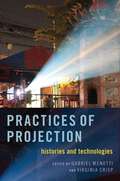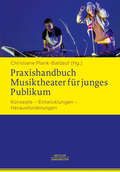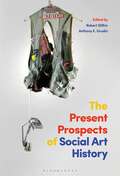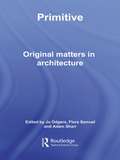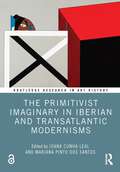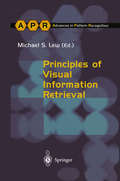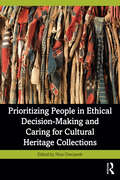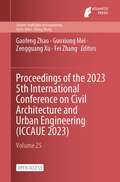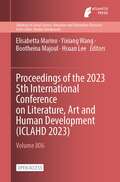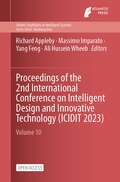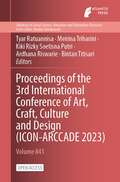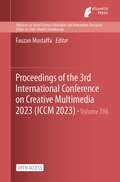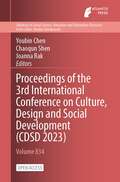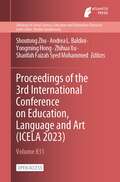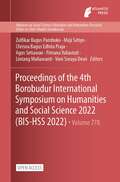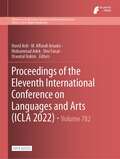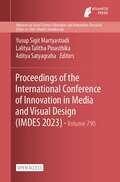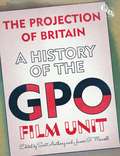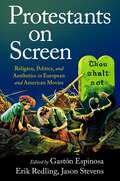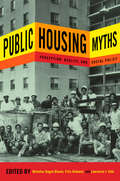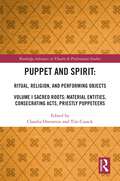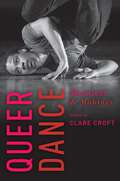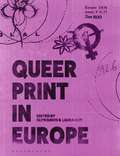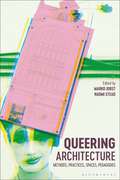- Table View
- List View
Practices of Projection: Histories and Technologies
To many, the technological aspects of projection often go unnoticed, only brought to attention during moments of crisis or malfunction. For example, when a movie theater projector falters, the audience suddenly looks toward the back of the theater to see a sign of mechanical failure. The history of cinema similarly shows that the attention to projection has been most focused when the whole medium is hanging in suspension. During Hollywood's economic consolidation in the '30s, projection defined the ways that sync-sound technologies could be deployed within the medium. Most recently, the digitization of cinema repeated this process as technology was reworked to facilitate mobility. These examples show how projection continually speaks to the rearrangement of media technology. Projection therefore needs to be examined as a pivotal element in the future of visual media's technological transition. In Practices of Projection: Histories and Technologies, volume editors Gabriel Menotti and Virginia Crisp address the cultural and technological significance of projection. Throughout the volume, chapters reiterate that projection cannot, and must not, be reduced to its cinematic functions alone. Borrowing media theorist Siegfried Zielinksi's definition, Menotti and Crisp refer to projection as the "heterogeneous array of artefacts, technical systems, and particularly visual praxes of experimentation and of culture." From this, readers can understand the performative character of the moving image and the labor of the different actors involved in the utterance of the film text. Projection is not the same everywhere, nor equal all the time. Its systems are in permanent interaction with environmental circumstances, neighboring structures, local cultures, and social economies. Thus the idea of projection as a universal, fully autonomous operation cannot hold. Each occurrence of projection adds nuance to a wider understanding of film screening technologies.
Praxishandbuch Musiktheater für junges Publikum: Konzepte – Entwicklungen – Herausforderungen
Zeitgenössisches Musiktheater für junges Publikum hat sich weit über den deutschsprachigen Raum hinaus zu einem wichtigen Genre im aktuellen Theaterbetrieb entwickelt. Dieses Handbuch gibt aus theaterpraktischer, künstlerischer und wissenschaftlicher Perspektive einen Überblick über die verschiedenen Arbeits- und Themenfelder. Ausgehend von der Vielfalt musikdramatischer Erscheinungsformen werden kompositorische und konzeptionelle Entstehungs- und Produktionsbedingungen untersucht, Wechselwirkungen zwischen strukturellen und ästhetischen Erscheinungsformen überprüft, Möglichkeiten interdisziplinärer und interkultureller Arbeitsweisen skizziert sowie Wege der Vermittlungsarbeit aufgezeigt. Das Handbuch vermittelt auf diese Weise nicht nur breite Einblicke in die aktuelle Diskussion der Zielsetzungen, Anforderungen und Wahrnehmungsweisen, sondern liefert auch vielfältige Anregungen.
The Present Prospects of Social Art History
The Present Prospects of Social Art History represents a major reconsideration of how art historians analyze works of art and the role that historical factors, both those at the moment when the work was created and when the historian addresses the objects at hand, play in informing their interpretations. Featuring the work of some of the discipline's leading scholars, the volume contains a collection of essays that consider the advantages, limitations, and specific challenges of seeing works of art primarily through a historical perspective. The assembled texts, along with an introduction by the co-editors, demonstrate an array of possible methodological approaches that acknowledge the crucial role of history in the creation, reception, and exhibition of works of art.
Primitive: Original Matters in Architecture
This innovative edited collection charts the rise, fall and possible futures of the word primitive. The word primitive is fundamental to the discipline of architecture in the west, providing a convenient starting point for the many myths of architecture's origins. Since the almost legendary 1970s conference on the Primitive, with the advent of post-modernism and, in particular, post-colonialism, the word has fallen from favour in many disciplines. Despite this, architects continue to use the word to mythologize and reify the practice of simplicity. Primitive includes contributions from some of today’s leading architectural commentators including Dalibor Vesely, Adrian Forty, David Leatherbarrow, Richard Weston and Richard Coyne. Structured around five sections, Negotiating Origins; Urban Myths; Questioning Colonial Constructs; Making Marks; and Primitive Futures, the essays highlight the problematic nature of ideas of the primitive, engage with contemporary debate in the field of post colonialism and respond to a burgeoning interest in the non-expert architecture. This now controversial subject remains, for better or worse, intrinsic to the very structure of Modernism and deeply embedded in architectural theory. Considering a broad range of approaches, this book provides a rounded past, present and future of the word primitive in the architectural sphere.
The Primitivist Imaginary in Iberian and Transatlantic Modernisms (Routledge Research in Art History)
Taking into account politics, history, and aesthetics, this edited volume explores the main expressions of primitivism in Iberian and Transatlantic modernisms. Ten case studies are thoroughly analyzed concerning both the circulations and exchanges connecting the Iberian and Latin American artistic and literary milieus with each other and with the Parisian circles. Chapters also examine the patterns and paradoxes associated with the manifestations of primitivism, including their local implications and cosmopolitan drive. This book opens up and deepens the discussion of the ties that Spain and Portugal maintained with their imperial pasts, which extended into European twentieth-century colonialism, as well as the nationalist and folk aesthetics promoted by the cultural industry of Iberian dictatorships. The book significantly rethinks long-established ideas about modern art and the production of primitivist imagery. The book will be of interest to scholars working in art history, Iberian studies, Latin American studies, colonialism, and modernism. The Open Access version of this book, available at www.taylorfrancis.com, has been made available under a Creative Commons Attribution-Non Commercial-No Derivatives (CC-BY-NC-ND) 4.0 license.
Principles of Visual Information Retrieval (Advances in Computer Vision and Pattern Recognition)
This text introduces the basic concepts and techniques in VIR. In doing so, it develops a foundation for further research and study. Divided into two parts, the first part describes the fundamental principles. A chapter is devoted to each of the main features of VIR, such as colour, texture and shape-based search. There is coverage of search techniques for time-based image sequences or videos, and an overview of how to combine all the basic features described and integrate them into the search process. The second part looks at advanced topics such as multimedia query. This book is essential reading for researchers in VIR, and final-year undergraduate and postgraduate students on courses such as Multimedia Information Retrieval, Multimedia Databases, and others.
Prioritizing People in Ethical Decision-Making and Caring for Cultural Heritage Collections
While historically focusing on the object, the study of ethics in conservation has expanded to consider the human aspect of conservation work. This book offers a flexible framework to guide decision-making in line with this development, offering an inclusive, compassionate approach to collections care. This edited volume contributes theories and international examples for advancing conservation practice and providing best practice for the field that centers people in conservation of cultural heritage and collections care. The first part examines the ethical theory that underpins conservation decision-making by challenging outdated norms, introducing updated methods, and demonstrating new ways to approach compassionate collections care. The second part considers the challenges of human-centered ethics in conservation practice, while the final part provides real-world examples and case studies of these best practices in action, including successful challenges to colonial authority. By presenting both theoretical and practical aspects of prioritizing people, this volume establishes the need for rethinking conservation approaches while demonstrating how to do so effectively. Combining theory and practice, Prioritizing People in Ethical Decision-Making and Caring for Cultural Heritage Collections is valuable reading for conservation professionals, including collections managers, conservators, curators, and registrars. It will also benefit students working in Cultural Heritage Conservation, Museum studies, and Heritage Studies, as well as those taking courses in Art History and Anthropology.
Proceedings of the 2023 5th International Conference on Civil Architecture and Urban Engineering (Atlantis Highlights in Engineering #25)
This is an open access book. ICCAUE 2023 is to bring together innovative academics and industrial experts in the field of civil engineering, architecture and urban engineering to a common forum. The primary goal of the conference is to promote research and developmental activities in civil engineering, architecture, water treatment engineering, water supply and sewerage engineering, tunnel & metro, underground construction engineering, disaster protection engineering, waste management, etc. And another goal is to promote scientific information interchange between researchers, developers, engineers, students, and practitioners working all around the world. The conference will be held every year to make it an ideal platform for people to share views and experiences in intelligent design and related areas. We warmly welcome all universities, academic units and research enterprises to actively participate in and mobilize academic talents at home and abroad to participate in the ICCAUE 2023 based on their actual needs. Relevant professionals to contribute and participate in the meeting, share in the industry leading technology and research achievements, promote academic exchanges, explore cooperation space.
Proceedings of the 2023 5th International Conference on Literature, Art and Human Development (Advances in Social Science, Education and Humanities Research #806)
This is an open access book. The 5th International Conference on Literature, Art and Human Development (ICLAHD 2023) was held on October 20-22, 2023 in Chengdu, China. Literature is an art that reflects the social life and expresses the author's thoughts and feelings by shaping images with language as the means. Art is a social ideology that uses images to reflect reality but is more typical than reality. It includes literature, painting, sculpture, architecture, music and so on. Literature is one of the forms of expression belonging to art. Literature and art are difficult to separate by a clear boundary, but also for people to create more infinite imagination space. ICLAHD 2023 is to bring together innovative academics and industrial experts in the field of Literature, Art and Human Development research to a common forum. The primary goal of the conference is to promote research and developmental activities in Literature, Art and Human Development research and another goal is to promote scientific information interchange between researchers, developers, engineers, students, and practitioners working all around the world. The conference will be held every year to make it an ideal platform for people to share views and experiences in Literature, Art and Human Development research and related areas.
Proceedings of the 2nd International Conference on Intelligent Design and Innovative Technology (Atlantis Highlights in Intelligent Systems #10)
This is an open access book.The 2nd International Conference on Intelligent Design and Innovative Technology (ICIDIT 2023) will be held in Chengdu, China from August 04 to 06, 2023.This conference mainly focuses on the latest research on "Intelligent Design and Innovative Technology". This conference brings together experts, scholars, researchers and relevant practitioners in this field from all over the world to share research results, discuss hot issues, and provide participants with cutting-edge scientific and technological information, so that you can timely understand the development trends of the industry and master the latest technologies, broaden research horizons and promote academic progress.
Proceedings of the 3rd International Conference of Art, Craft, Culture and Design (Advances in Social Science, Education and Humanities Research #841)
This is an open access book. Globally, 2023 marks the mid-point of the 2030 UN Sustainable Development Goals agenda, yet we are still struggling to rebuild and respond to current conditions in every aspect. The future remains unpredictable and never have we been presented with such complexity as what we are facing today. As we continue to live in this age of Anthropocene, we carry on the legacy of being the cause of both destruction and rehabilitation. These ambiguous roles manifest on every occasion when we try to solve a problem. Consequently, we grow to feel more anxious and innovation seems to no longer be possible. Creativity is at the heart of what we do as artists, makers, and designers. For us, crisis creates opportunities to open up other pathways in this ever-changing world. With its fluidity, art, craft, culture, and design discipline has significant roles in facilitating changes everywhere through its capability to connect humans, nature, and everything in between. At this conference, we are inviting you to explore the theme of “Fluid & Ubiquitous”, which is elaborated into various sub-themes that encompass some key ideas: Care Systemic Design Cross-cultural Identity Object as an Agency Transmateriality
Proceedings of the 3rd International Conference on Creative Multimedia 2023 (Advances in Social Science, Education and Humanities Research #786)
This is an open access book.The Faculty of Creative Multimedia (FCM), Multimedia University will hold the 3rd International Conference on Creative Multimedia 2023 (ICCM2023) on 26–28 July 2023 (Virtual Conference). ICCM2023 invites prospective authors to take part by submitting research papers in pursuing the vibrant discourse of creative multimedia. ICCM2023 aims to bring together related research scholars, educators, practitioners, policymakers, enthusiasts, fellow students, and design entrepreneurs from various perspectives, disciplines, and fields to share and exchange their research experiences and results on all aspects of arts, design, and creative media technologies. ICCM2023 embraces possibilities, provides an interdisciplinary forum for all stakeholders to present and discuss current trends, innovations, and concerns, as well as practical issues and solutions in the field of creative multimedia. We welcome high-quality research contributions dealing with original and unpublished results on fundamental, conceptual, empirical and experimental work in all areas of arts, design and creative media technologies.
Proceedings of the 3rd International Conference on Culture, Design and Social Development (Advances in Social Science, Education and Humanities Research #834)
This is an open access book.Culture is the spiritual activity and product of human society relative to economy and politics. The traditional concept of human beings believes that culture is a social phenomenon, a product created by human beings for a long time, and at the same time a historical phenomenon, which is the accumulation of human society and history.The technical, economical and cultural nature of art design determines that only with high social and economic development can art and culture flourish. Art design is the product of the combination of art and technology. Art design is also a kind of productivity, which promotes the development of social economy. As a driving factor for social and economic development, design art will also better serve the social economy with its own more perfect operating system.The purpose of CDSD 2023 is to provide an international platform for experts, scholars, engineers and technicians, and technical R&D personnel engaged in related fields such as "culture", "design" and "social development", to share scientific research results, broaden research ideas, collide with new ideas, and strengthen academic research, and to explore the key challenges and research directions faced by the development of this field, and promote the industrialization cooperation of academic achievements. Experts, scholars, business people and other relevant personnel from universities and research institutions at home and abroad are cordially invited to attend and exchange.
Proceedings of the 3rd International Conference on Education, Language and Art (Advances in Social Science, Education and Humanities Research #831)
This is an open access book. About Education: In a narrow sense refers to specially organized school education; in a broader sense, it refers to the social and practical activities that affect the physical and mental development of people. The significance of education is to make people understand the responsibility and righteousness of human society as a person. Only when a person understands his responsibilities and obligations can he become a useful person. The premise is that only those who fulfill their responsibilities and obligations can become a useful person. This is the purpose of education.About Language: Language is a product of a certain society, a phenomenon unique to society, there is no such thing as language outside of society, there is no society, there is no language, the development of language by social constraints, language with the emergence of society, with the development of society and development, with the death of society and death.Language is the bridge and link between members of society, is the tool for mutual communication and expression of ideas, society can not be separated from language, without language, society will collapse and cease to exist.About Art: The value of art, human core, people's aesthetic attitude determines the value of art. Art is a spiritual product, closely related to our life, it can make enrich our spiritual life. The value of art is not only limited to life, it has great value in society, history and business. As an appreciator, we perceive the beauty of art works through images, sounds, experiences, observations, imaginations, and emotions in multiple dimensions, so as to obtain spiritual and emotional pleasure.
Proceedings of the 4th Borobudur International Symposium on Humanities and Social Science 2022 (Advances in Social Science, Education and Humanities Research #778)
This is an open access book.Related to the big theme of the SDGs reinforcement at our previous conference, we try to invite all academics and researchers around the world to participate in the 4th Borobudur International Symposium 2022 (4thBIS 2022). As we know, the COVID-19 pandemic and its impact on all the 17 SDGs have demonstrated how what began as a health catastrophe swiftly transformed into a human, socioeconomic and environmental crisis. The 4th BIS brought up “The Innovation Chain: A Contribution to Society and Industry” as the main theme to respond this condition. This conference is expected to support the UN Agenda. Additionally, this conference will also provide avenues for participants to exchange ideas and network with each other as well as domain experts from their fields. Overall, this event is aimed at professionals across all spheres of technology and engineering including the experienced, inexperienced, and students as well. The conference will be held virtually on Wednesday, December 21st, 2022 in Magelang, Central Java, Indonesia.
Proceedings of the Eleventh International Conference on Languages and Arts (Advances in Social Science, Education and Humanities Research #782)
This is an open access book.Industrial Revolution 4.0. is a global acceleration era in creating a masterpiece to accelerate economic achievement in a country. This era is a challenge for all of us particularly in the field of language, literature, arts and education. In order to respond this challenge, creative industry should take and play important role to bring benefit for our country. For this purpose the 11th International Conference on Language and Arts (ICLA-11) invites researchers, teachers/lecturers, and students to come as presenters or participants. This year theme is “Current Issues in Collaborative Learning and Digital Technology in Languages and Arts”.
Proceedings of the International Conference of Innovation in Media and Visual Design (Advances in Social Science, Education and Humanities Research #790)
This is an open access book. The existence of digital virtuality in the midst of an information society has become an integral component of the human existential condition. New spaces for exploring the engagement of design and its impact on humans in digital virtuality continue to grow exponentially. Innovation in Media and Visual Design (IMDES 2023) welcomes thoughts and works of academics, researchers and practitioners related to virtuality, design, technology, mass media and people from various perspectives, disciplines and fields of knowledge.
The Projection of Britain: A History of the GPO Film Unit
The General Post Office (GPO) Film Unit sat at the creative epicentre of Britain in the 1930s. It nurtured a vital crop of artistic talent, built a forum for a new kind of cinematic address and created Britain's first self-consciously national cinema. In 2011, UNESCO added its work to the UK Memory of the World Register, recognising its status as part of Britain's cultural heritage. Elements of the GPO Film Unit's story are well known: John Grierson's development of documentary cinema; the influence of Mass Observation and Surrealism on its cinematic vision; the Watt–Auden–Britten collaboration Night Mail. The Projection of Britain: A History of the GPO Film Unit brings together primary materials and critical appraisals to revisit, re-contextualise and revitalise these seminal moments in British cinema. Here, the insights of an archivist, a musicologist, a design historian, a sports historian, a geographer and a postman – among others – have been edited into a rich critical archaeology of a compelling moment in cinematic history. Interspersed with these essays are primary materials – memoirs, magazine articles, posters and government documents – that detail everything from Alberto Cavalcanti's vision for the documentary movement to a claim for the clothes Humphrey Jennings lost while shooting on location. In recent years there has been a resurgence of interest in the GPO Film Unit and its work, on the big screen, in DVD boxsets and on the web. The Projection of Britain ties together the Unit's diverse artistic, historical and cultural threads into an essential one-stop resource. Provocative, imaginative and ambitious, this expansive study is the definitive companion to an extraordinary episode in cinematic history.
Protestants on Screen: Religion, Politics and Aesthetics in European and American Movies
Protestants on Screen explores the Protestant contributions to American and European film from the silent era to the present day. The authors analyze how Protestant filmmakers, beliefs, theology, symbols, sensibilities, and cultural patterns have shaped the history of film. Challenging the stereotype of Protestants as world-denouncing-and-defying puritans and iconoclasts who stood in the way of film's maturation as an art, the authors contend that Protestants were among the key catalysts in the origins and development of film, bringing an identifiably Protestant aesthetic to the medium. The essays in this volume track key Protestant themes like faith and doubt, sin and depravity, biblical literalism, personal conversion and personal redemption, holiness and sanctification, moralism and pietism, Providence and secularism, apocalypticism, righteousness and justice, religion and race, the priesthood of all believers and its offshoots-democratization and individualism. Protestants, the essays in this volume demonstrate, helped birth and shape the film industry and harness the power of motion pictures for spiritual instruction, edification, and cultural influence.
Public Housing Myths: Perception, Reality, and Social Policy
Popular opinion holds that public housing is a failure; so what more needs to be said about seventy-five years of dashed hopes and destructive policies? Over the past decade, however, historians and social scientists have quietly exploded the common wisdom about public housing. Public Housing Myths pulls together these fresh perspectives and unexpected findings into a single volume to provide an updated, panoramic view of public housing. With eleven chapters by prominent scholars, the collection not only covers a groundbreaking range of public housing issues transnationally but also does so in a revisionist and provocative manner. With students in mind, Public Housing Myths is organized thematically around popular preconceptions and myths about the policies surrounding big city public housing, the places themselves, and the people who call them home. The authors challenge narratives of inevitable decline, architectural determinism, and rampant criminality that have shaped earlier accounts and still dominate public perception.
Puppet and Spirit: Volume I Sacred Roots: Material Entities, Consecrating Acts, Priestly Puppeteers (Routledge Advances in Theatre & Performance Studies)
This anthology of essays aims to explore the many types of relationships that exist between puppets, broadly speaking, and the immaterial world. The allure of the puppet goes beyond its material presence as, historically and throughout the globe, many uses of puppets and related objects have expressed and capitalized on their posited connections to other realms or ability to serve as vessels or conduits for immaterial presence. The flip side of the puppet’s troubling uncanniness is precisely the possibilities it represents for connecting to discarnate realities. Where do we see such connections? How do we describe, analyze, and theorize these relationships? The first of two volumes, this book focuses on these questions in relation to long-established, traditional practices using puppets, devotional objects, and related items with sacred aspects to them or that perform ritual roles. Looking at performance traditions and artifacts from China, Indonesia, Korea, Mali, Brazil, Iran, Germany, and elsewhere, the essays from scholars and practitioners provide a range of useful models and critical vocabularies for addressing the ritual and spiritual aspects of puppet performance, further expanding the growing understanding and appreciation of puppetry generally. This book, along with its companion volume, offers, for the first time, robust coverage of this subject from a diversity of voices, examples, and perspectives.
Quebec Cinema in the 21st Century: Transcending the National (Contemporary French and Francophone Cultures #95)
This collection of ten chapters and three original interviews with Québécois filmmakers focuses on the past two decades of Quebec cinema and takes an in-depth look at a (primarily) Montreal-based filmmaking industry whose increasingly diverse productions continue to resist the hegemony of Hollywood and to exist as a visible and successful hub of French-language – and ever more multilingual – cinema in North America. This volume picks up where Bill Marshall’s 2001 Quebec National Cinema ends to investigate the inherently global nature of Quebec’s film industry and cinematic output since the beginning of the new millennium. Through their analyses of contemporary films (Une colonie, Avant les rues, Bon cop, bad cop, Les Affamés, Tom à la ferme, Uvanga, among others), directors (including Xavier Dolan, Denis Côté, Sophie Desrape, Chloé Robichaud, Jean-Marc Vallée, and Monia Chokri) and genres (such as the buddy comedy and the zombie film), our authors examine the growing tension between Quebec cinema as a “national cinema” and as an art form that reflects the transnationalism of today’s world, a new form of fluidity of individual experiences, and an increasing on-screen presence of Indigenous subjects, both within and outside the borders of the province. The book concludes with specially conducted interviews with filmmakers Denis Chouinard, Bachir Bensadekk, and Marie-Hélène Cousineau, who provide their views and insights on contemporary Quebec filmmaking.
Queer Dance
If we imagine multiple ways of being together, how might that shift choreographic practices and help us imagine ways groups assemble in more varied ways than just pairing another man with another woman? How might dancing queerly ask us to imagine futures through something other than heterosexuality and reproduction? How does challenging gender binaries always mean thinking about race, thinking about the postcolonial, about ableism? What are the arbitrary rules structuring dance in all its arenas, whether concert and social or commercial and competition, and how do we see those invisible structures and work to disrupt them? Queer Dance brings together artists and scholars in a multi-platformed project-book, accompanying website, and live performance series to ask, "How does dancing queerly progressively challenge us?" The artists and scholars whose writing appears in the book and whose performances and filmed interviews appear online stage a range of genders and sexualities that challenge and destabilize social norms. Engaging with dance making, dance scholarship, queer studies, and other fields, Queer Dance asks how identities, communities, and artmaking and scholarly practices might consider what queer work the body does and can do. There is great power in claiming queerness in the press of bodies touching or in the exceeding of the body best measured in sweat and exhaustion. How does queerness exist in the realm of affect and touch, and what then might we explore about queerness through these pleasurable and complex bodily ways of knowing?
Queer Print in Europe
How have radical print cultures fostered and preserved queer lived experience from the 1960s to the present? What alternative stories about queer life across Europe can visual material reveal? Queer Print in Europe is the first book devoted to the exploration of queer print cultures in Europe, following the birth of an international gay rights movement in the late 1960s. By unearthing these ephemeral paper documents from archives and personal collections, including materials that have been out of circulation since they were first distributed, this book examines how the production and dissemination of queer print intersected with the emergence of LGBTQ+ activism within specific national contexts. This vital contribution to queer history explores borders and political movements, and the ways in which these materials contributed, through their international circulation, to the creation of a 'post-national' queer community.Illustrated throughout with examples of manifestos, flyers, posters, zines and other forms of print media, it features interviews with those responsible for making, distributing or archiving queer print, alongside a series of new theoretical essays that set particular publications and the individuals and groups that produced them in context. The book isolates specific instances of queer print media and scrutinises their design aesthetics, identifying both the significant contribution that queer print has made to histories of LGBTQ+ struggle and to the history of print design.
Queering Architecture: Methods, Practices, Spaces, Pedagogies
Featuring contributions from a range of significant voices in the field, this volume renews the conversation around what it means to speak of the 'queer' in the context of architecture, and offers a fresh take on the methodological and epistemological challenges this poses to the discipline of architectural theory. Architecture as a discipline, a profession and an applied practice, is always subordinate to its own conceptual framework, which is one of orderliness. It refers to buildings, but also to infrastructures of thought and knowledge, to conventions and taxonomies, to structures of governance, hierarchies of power and systems of administration. How, then, can one look at queering architectural discourse when the very term 'queer', celebrated for its elusive, slippery nature, resists and attacks such order?Divided into four subsections, the essays in this anthology each purse a distinct line of inquiry - methods, practices, spaces, and pedagogies - in order to help particularize the proposed queering of architecture. They demonstrate the paradoxical nature of the endeavour from a diverse range of perspectives – from the questions of mapping queer theory in architecture; to the issues of queer architectural archives, or lack thereof; to the non-Western linguistic challenges to the very term queer alongside decolonial approaches to architecture via indigeneity and landscape.Queering Architecture not only provides a bold challenge to the normative methods employed in architectural discourse but addresses the paradoxical nature of establishing 'queer' methodologies in itself. Essential reading for architectural and queer theorists.
